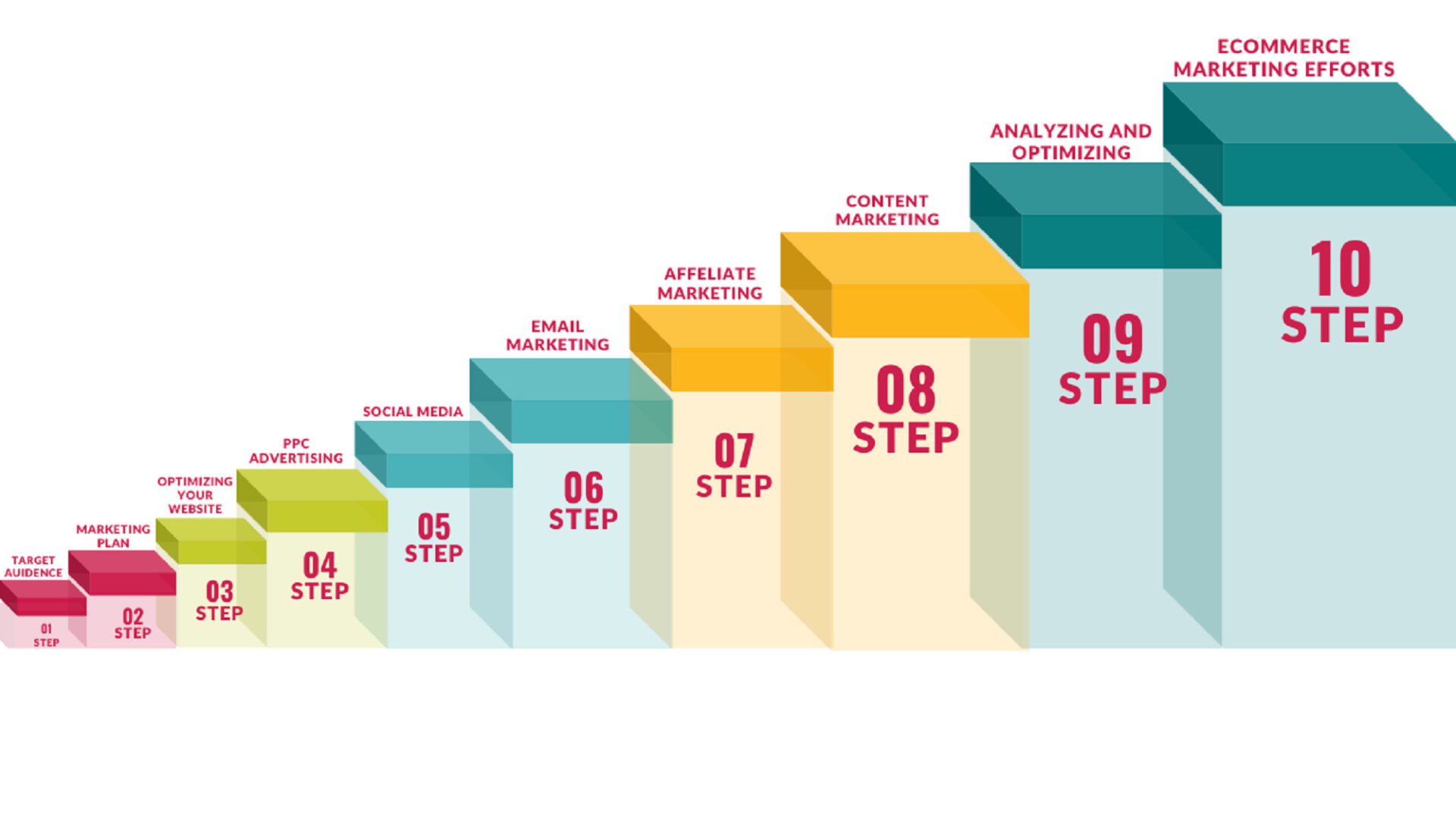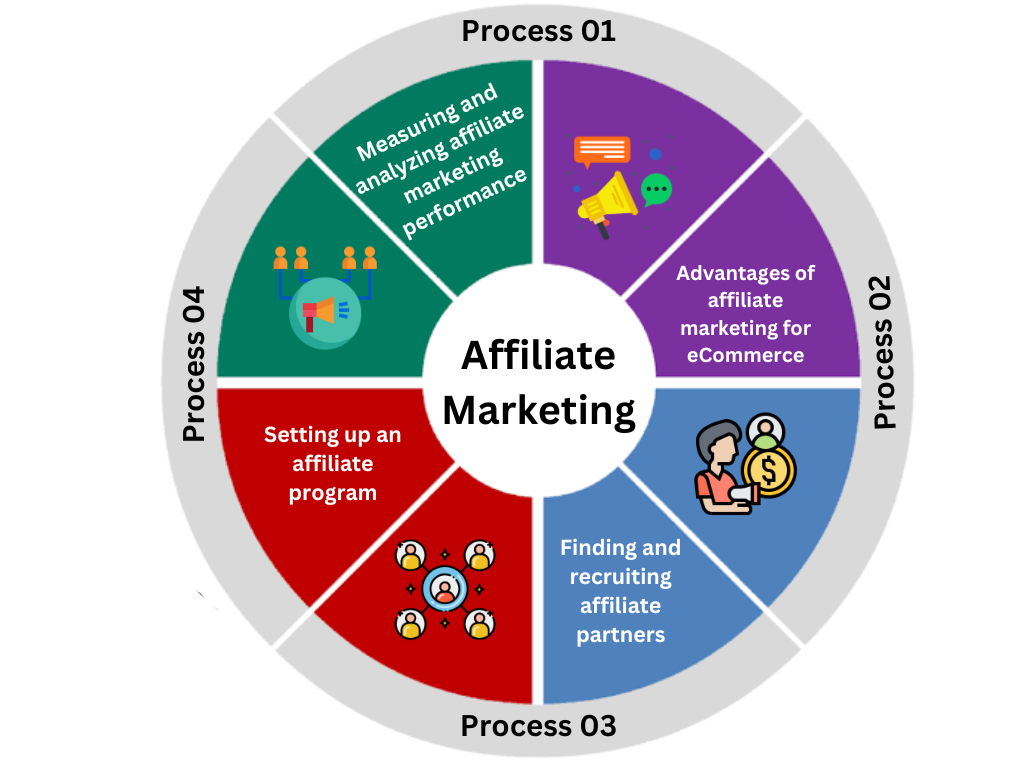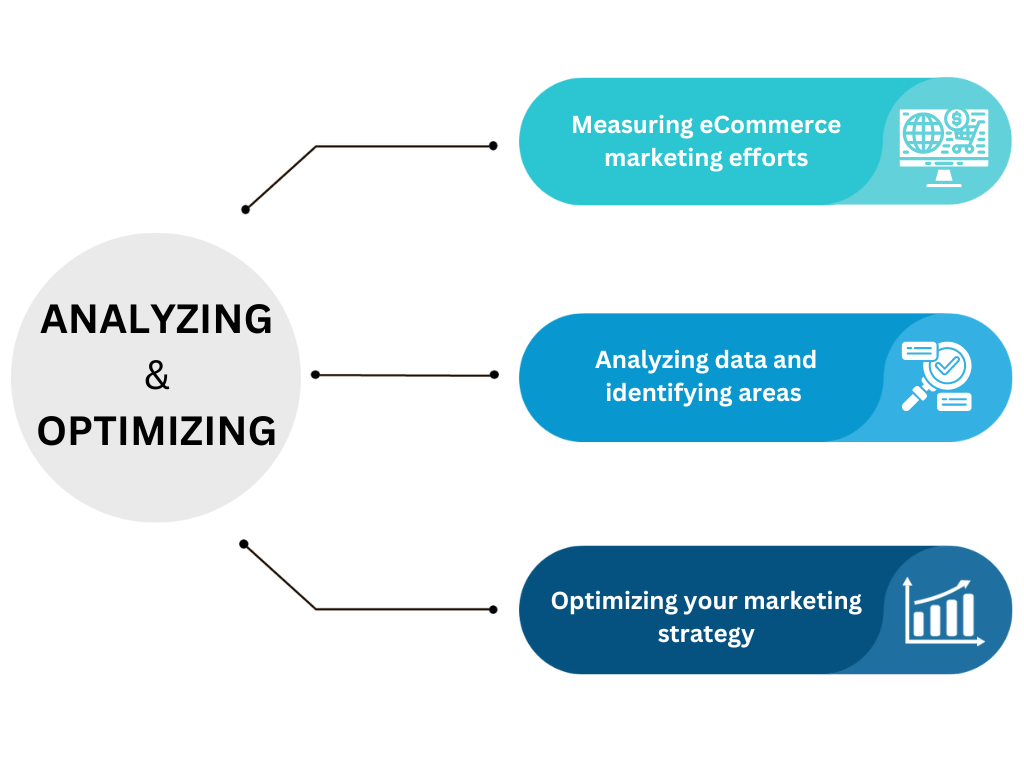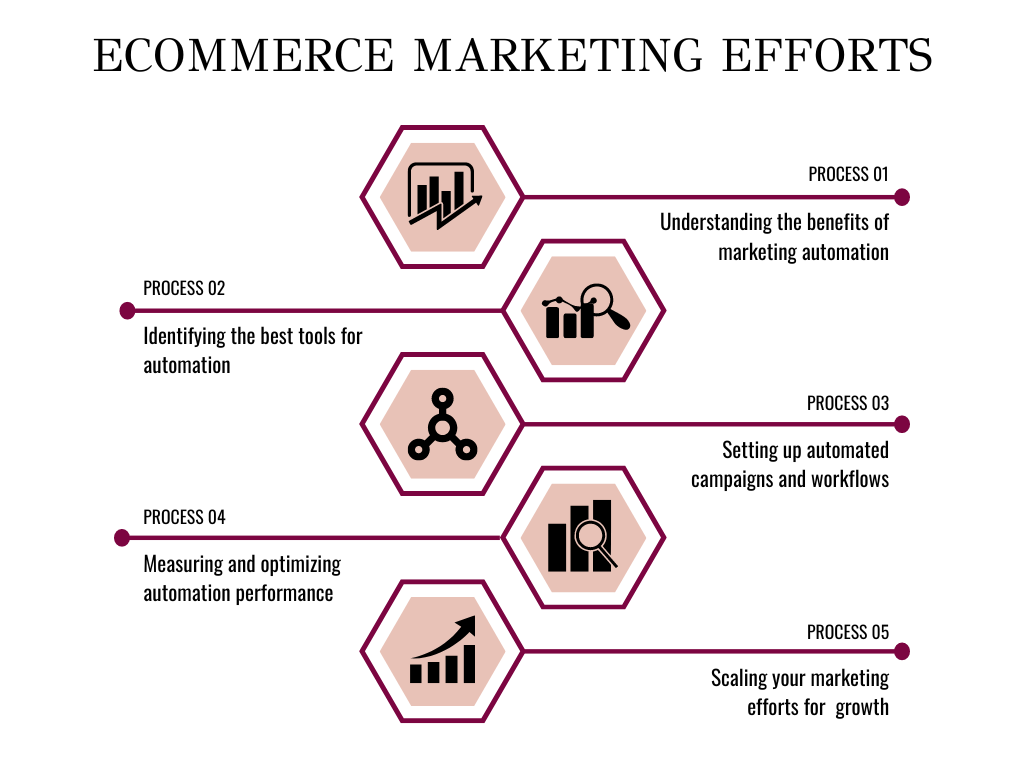
Understanding the Basics of the eCommerce Marketing
eCommerce marketing is the process of promoting and selling products or services online through various digital channels. It encompasses a wide range of activities, including search engine optimization (SEO), pay-per-click (PPC) advertising, social media marketing, email marketing, content marketing, and affiliate marketing.
With the rise of the internet and mobile devices, eCommerce marketing has become an essential component of today’s business landscape. Consumers are increasingly turning to online channels to research products and make purchases, making it crucial for businesses to have a strong online presence and effective eCommerce marketing strategies.
The key elements of a successful eCommerce marketing strategy include:
- Understanding your target audience and their needs
- Developing a clear marketing plan with specific goals and objectives
- Optimizing your website for search engines
- Utilizing PPC advertising and social media to drive traffic to your site
- Incorporating email marketing and content marketing to engage with customers and build brand loyalty
- Using automation tools and analytics to measure and optimize performance.
10 steps of thrive in eCommerce Marketing
By following a step-by-step approach and focusing on these key elements, businesses can create an effective eCommerce marketing strategy that will help them thrive in the digital marketplace.
Step 1: Defining Your Target Audience in eCommerce marketing
Defining your target audience is the process of identifying and understanding the characteristics and needs of the group of people that are most likely to purchase your products or services. This includes researching demographics, interests, and pain points, creating buyer personas, and researching your competition. By defining your target audience, you can create a marketing strategy that speaks directly to them and increases the chances of attracting and retaining customers.

Step 2: Develop a Marketing Plan for eCommerce marketing
Developing a marketing plan is the process of creating a strategy for promoting and selling your products or services. This includes setting clear goals and objectives, identifying your unique selling proposition (USP), creating a content calendar, and budgeting for marketing efforts. A marketing plan helps to guide your marketing efforts and ensure that they are aligned with your overall business goals. It also helps to measure the effectiveness of your efforts and make adjustments as needed.

Step 3: Optimizing Your Website for SEO in eCommerce marketing
Optimizing your website for SEO is the process of making technical and content-related changes to your website to improve its visibility and ranking in search engine results. This includes on-page optimization techniques such as keyword research, meta tags, and optimizing website structure, as well as off-page optimization techniques like building backlinks and social media signals. Measuring and analyzing SEO performance is also important, as it involves using tools to track and measure your website’s search engine rankings, as well as monitoring the traffic, bounce rate, and conversion rates. This data can then be used to optimize your SEO strategy and improve your website’s performance.

Step 4: Utilizing PPC Advertising in eCommerce marketing
Utilizing PPC advertising, also known as pay-per-click advertising, is a way to drive targeted traffic to your website by placing ads on search engines or social media platforms. Setting up a PPC campaign involves choosing the right platforms, creating ads, and ensuring your ads are seen by the right people through keyword research and ad copywriting. Measuring and optimizing PPC performance is important, as it involves tracking metrics like click-through rate, conversion rate, and return on investment to determine the effectiveness of your ads and make adjustments as needed.

Step 5: Leveraging Social Media in eCommerce marketing
Leveraging social media is the process of using platforms like Facebook, Instagram, Twitter, and LinkedIn to connect with your target audience, build relationships, and drive traffic to your website. It allows you to increase brand awareness, engage with customers and promote products or services. Choosing the right platforms, creating a content calendar, building a community, and engaging with customers is important in social media strategy. Measuring and analyzing social media performance by tracking metrics such as likes, shares, and engagement, will help to optimize your social media strategy and improve results.

Step 6: Incorporating Email Marketing into eCommerce marketing
Incorporating email marketing is using email to promote products or services, build relationships and drive sales. It’s a powerful tool for eCommerce marketing businesses as it allows for reaching a large audience in a highly targeted way. Building an email list is an important step in email marketing, which involves collecting email addresses from customers and potential customers. Creating effective email campaigns involves crafting emails that are relevant, valuable, and engaging for your target audience, including using attention-grabbing subject lines, a clear call-to-action, and segmenting your list. Measuring and analyzing email marketing performance is important, as it involves tracking metrics such as open rates, click-through rates, and conversion rates to determine the effectiveness.

Step 7: Implementing Content Marketing in eCommerce marketing
Implementing content marketing is the process of creating and sharing valuable and relevant content to attract and engage a target audience, with the goal of driving profitable customer action. It’s a key component of eCommerce marketing, allowing to educate and engage with target audience in a non-promotional way. Types of content include blog posts, videos, infographics, images, and gifs. Creating a content marketing strategy involves identifying your target audience, setting clear goals, creating a content calendar, and consistently creating valuable content. Measuring and analyzing content marketing performance is important, by tracking metrics such as website traffic, engagement, and conversions to determine the effectiveness of your content and make adjustments as needed.

Step 8: Utilizing Affiliate Marketing in eCommerce marketing
Utilizing affiliate marketing is a type of performance-based eCommerce marketing where a business rewards its partners for each visitor or customer they bring in. It allows a business to expand its reach and increase brand awareness by partnering with other businesses or individuals who promote its products or services. Finding and recruiting affiliate partners involves identifying potential affiliates who have a strong presence and a loyal following in your target market. Setting up an affiliate program involves creating a system to track and reward partners for their efforts. Measuring and analyzing affiliate marketing performance is important, by tracking metrics such as sales, leads, and website traffic generated by affiliate partners to determine the effectiveness.

Step 9: Analyzing and Optimizing Your Results in eCommerce marketing
Analyzing and optimizing results is the process of measuring the success of eCommerce marketing efforts and making adjustments to improve them. This includes tracking key performance indicators such as website traffic, conversions, and revenue, as well as monitoring customer engagement and retention. By analyzing data and identifying areas for improvement, businesses can optimize their marketing strategy. This includes identifying which tactics are working well and making changes to improve ROI, increase conversions, and grow the business.

Step 10: Automating and Scaling eCommerce Marketing Efforts
Automating and scaling eCommerce marketing efforts is using technology to streamline repetitive tasks and increase the impact of marketing campaigns. Marketing automation tools automate tasks such as email campaigns, social media posts, and lead generation, to increase efficiency and improve ROI. Identifying the best tools for automation involves researching and comparing different platforms and choosing the one that best fits your business needs. Setting up automated campaigns and workflows involves creating a system for triggering specific actions based on conditions or events. Measuring and optimizing automation performance involves tracking metrics such as open rates, click-through rates, and conversion rates to determine the effectiveness of automation efforts and make adjustments as needed.

Conclusion: Staying Ahead in the eCommerce Marketing
Staying up to date with eCommerce marketing trends is essential for staying competitive in the digital marketplace. This includes keeping an eye on new technologies, changes in consumer behavior, and shifts in the overall market. By following the steps outlined in this guide, businesses can develop a comprehensive eCommerce marketing strategy that will help them to reach their target audience, increase conversions, and grow their business. However, it’s important to note that eCommerce marketing is an ongoing process and requires continuous monitoring, testing, and optimization to stay ahead of the competition. Additionally, staying up to date with the latest eCommerce marketing trends and technologies is critical for success.

